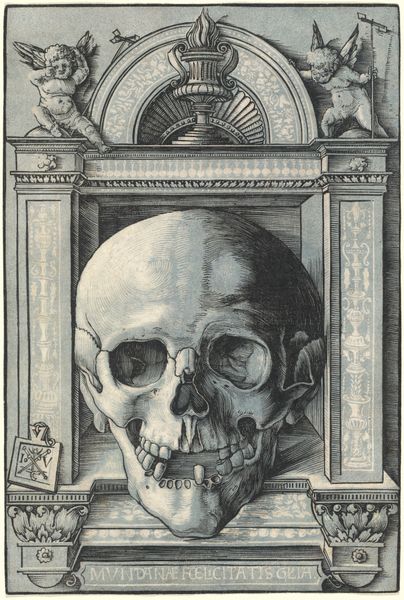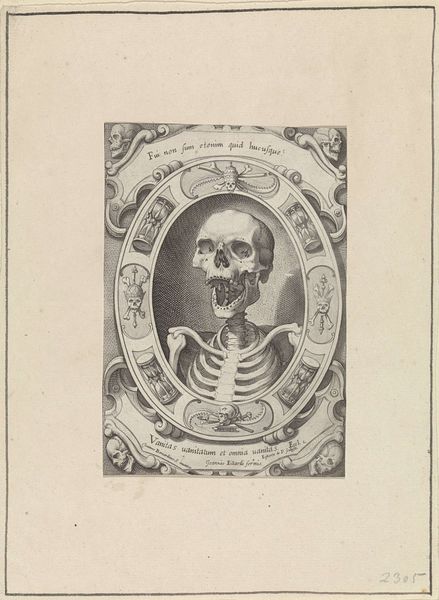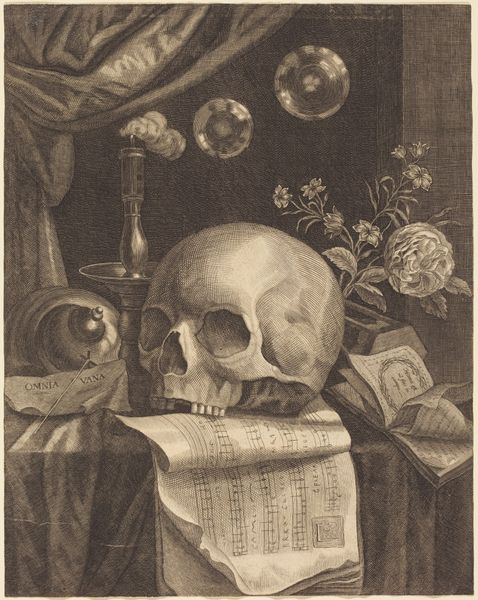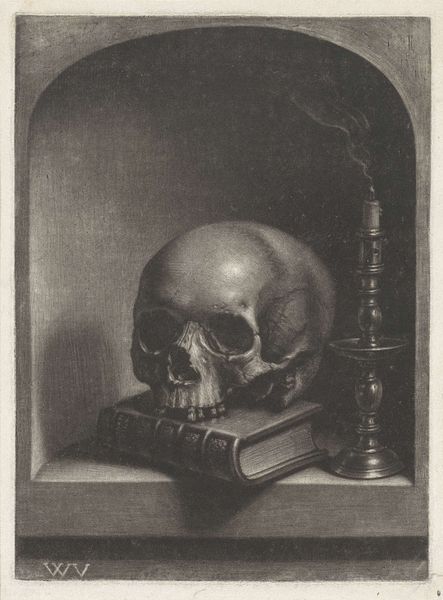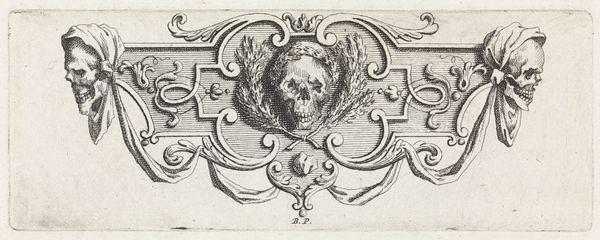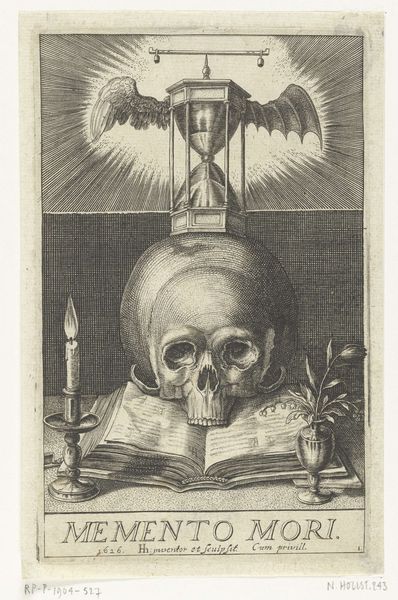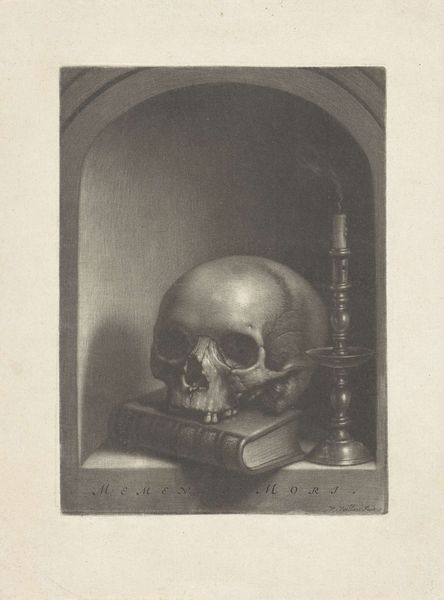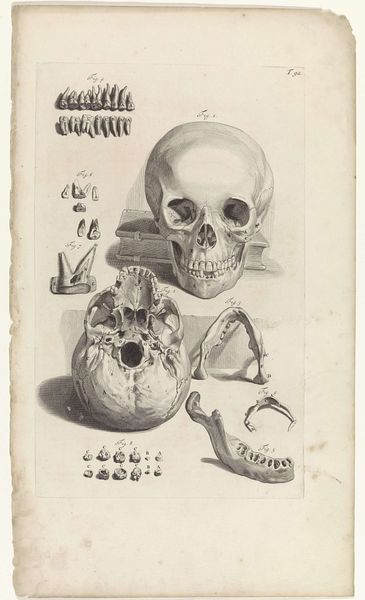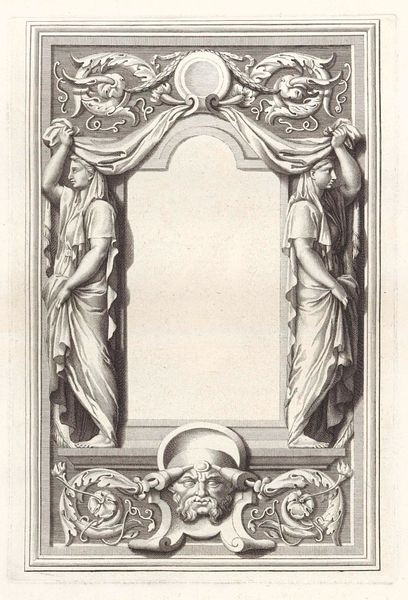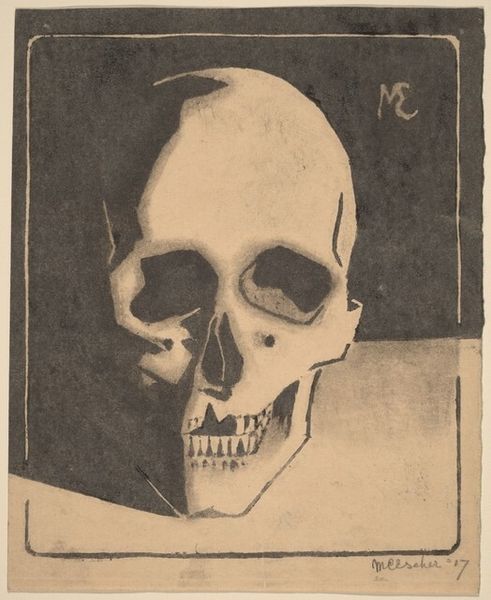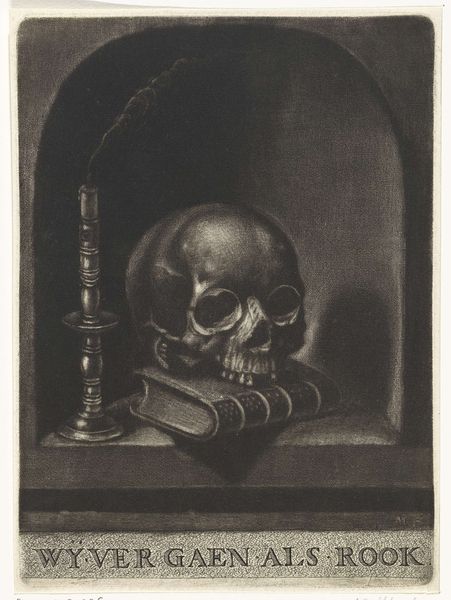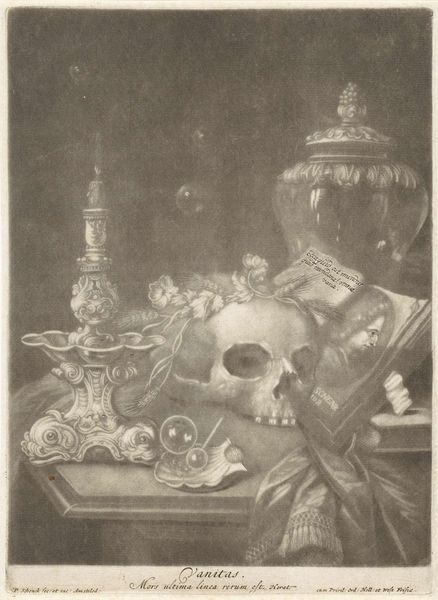
Dimensions: 378 mm (height) x 322 mm (width) (plademaal)
Jan Saenredam created this engraving, "Death's Head," around the turn of the 17th century using the intaglio process, a printing technique where the image is incised into a metal plate. The fine lines we see are the result of a skilled hand using a burin to carefully carve into the copper, a testament to the labor and precision required. The stark contrast between the delicate lines and the blank paper allows Saenredam to build up tone and texture, giving the skull a sense of volume and decay. This wasn't just about aesthetic skill, though. In a time of religious and social upheaval, the printing press was a powerful tool. Engravings like this one weren't just art objects; they were a way to disseminate ideas and imagery widely, reflecting on mortality and the human condition. Saenredam masterfully reminds us that art, even in its smallest form, can carry profound cultural weight. It challenges us to think about the relationship between skill, production, and the broader themes of life and death.
Comments
No comments
Be the first to comment and join the conversation on the ultimate creative platform.
